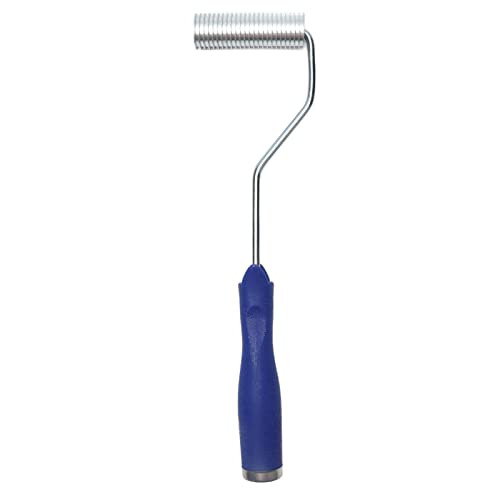At the end of April, I promised my wife I'd take the month of May off from working on the boat. Next thing I know, it's August and the boat became just another shelf in the garage. I finally got back to work recently and have a lot of updates to show, but first...
Story Time:
I live in an annexed suburb of Houston (Kingwood), about 30 minutes northeast of downtown. As I'm sure you're aware, we got hit hard by Harvey the last week of August. All of our creeks, rivers, and bayous swelled pretty quickly due to receiving nearly 50 inches of rain over the course of 4-5 days. Kingwood is on the San Jacinto river, which feeds into into Lake Houston in the southeastern border of the suburb. The river began to go out of bounds on Sunday 8/27. Downtown Houston was also under water. A county judge held a press conference and made a statement describing how first responders were already inundated with rescue calls from residents trapped in their homes. He put out a plea for anyone with a boat to consider assisting with rescue efforts. I was sitting in the AC watching cable TV and playing on my phone while friends and neighbors were losing everything only a few miles away. So I stayed up until 3AM that night getting my boat ready to serve. My motor troubles are well documented on this thread, and that night proved no different. I decided that even my trolling motor was better than doing nothing.
Here's some pictures from the first day of search & rescue in Kingwood, Texas:
^^^This is a main road, appropriately named West Lake Houston Parkway. It served as a public boat ramp that day. We were the third boat out on the first day.
For the first rescue, we paired up with some other locals and helped an elderly couple out of their home. The water had not risen to their house yet (pic of their driveway^), but you'll see later that they made the right call evacuating the first day.
I used to live in these apartments until I bought my house in 2012. I have coworkers and friends that still live there, but fortunately on the 2nd/3rd floors.
Texas Forever
Monster truck guy showed up at 5PM when I was loading up. This was probably the most practical vehicle of the day.

It got much worse on day 2, but let me explain something to ya'll before we get to that. This Force 40 motor has not been run any longer than a few seconds in over the last 4-5 years. I've cranked it over countless times and it would not start 9 out of 10 times. Only a handful of times was I able to get it to run, but even then it would die within 5 seconds. Even after repairing a number of things and replacing some fuel and ignition components, it would not run - ever. When we unloaded the boat and started to head to the first address that called for rescue, I didn't even bother trying the motor. I put the trolling motor down and started on my way. However, there were 2 big problems: the water was not always deep enough for the trolling motor and second, the current was far too powerful for a little 43 lb thrust TM to handle. So I said a quick prayer and began to go through the same 2-stroke startup sequence I had tried dozens of times before with no success. That motor started on the first turn of the key and ran like a CHAMP ALL DAY.
I don't believe in karma or fate or destiny. What I do believe is that God caused that motor to run for three days straight so I could be at the service of others. I'm thankful for that.
Day 2: The next day, things got much worse. Up river is Lake Conroe, which under normal conditions maintains a water release rate of about 2,700 cubic feet per second. With all the rain they were receiving in Conroe, the San Jacinto River Authority made a decision to open the dam at a record rate - nearly 80,000 cubic feet per second. Combining a wall of water with 30-40 inches of rain (up to that point) caused the river to rise exponentially. The flooding capped out between the 800-year and 1,000-year floodplain lines. The first day, my boat was dragging bottom in some areas. Day 2, you couldn't see stop signs at those same spots.

A nursing home put out a call for help after water rose into their first floor and forced the residents to hunker down on the second and third floors. They had 130 residents to evacuate, plus a handful of staff. They were well taken care of, but were beginning to run out of food and water and they had no running water either. We teamed up with about a dozen other boats manned by the coast guard, Texas state police, Game Wardens, HFD/HPD, the Cajun Navy, and a lot of ordinary people just like you and me. We carried about 130 residents down to the boats and led them to higher ground where they were transferred to shelters. It was heartbreaking to see.
There were Blackhawks, Apaches, and HH-65 Dolphins doing extractions from rooftops. C-130s and C-17s were flying overhead surveying the area.
Houston's Finest:
Day 3: The rain stopped, the sun came out, and the water levels began to go down. But much of Kingwood/Houston was still under water. We spent the day taxiing friends and strangers to their flooded homes so they could survey the damage and grab clothes and other essentials.
That motor never stopped running...
My lower unit was beat. My prop is absolutely ruined, the skeg is bent, and I have no idea where my trim tab went.
The aftermath:
The edges of 2 of the 3 prop blades were completely bent out of shape with the leading edge of the blade turning towards the front instead of facing behind the boat. Aside from dragging along shallow roads, hitting curbs/fire hydrants...I think the final blow was a submerged brick mail box I hit with at open throttle so I could get through a section with a pretty strong current. After that, full throttle would get me no better speed than as though I were idling.

Day 4: After three days of search & rescue, the water levels receded and allowed us to shift focus from saving people to saving homes as the threat of mold creeped in. I'm still in awe with how people responded to a disaster and stepped up to serve their neighbors. Kingwood alone had hundreds of homes flooded. We had about a dozen boats working the first day, but I stopped counting at 70 boats on the second day when the flooding was at its worst. I had to wait an hour and a half in line before I could launch my boat on day 2. I had about 30 people that were rescued on my boat, but I believe the total numbers of rescues in Kingwood was about 300-400. Once the water levels went down, literally thousands of people showed up to help with demo and worked for 10 days straight. I led a crew from my church, which had about 100 volunteers split across 10+ crews each day. We started with demo work for our church members who lost their homes, and then just started going door to door until each home in the neighborhood was dry and ready for contractors. As of Saturday 9/9, only 10 days after beginning the clean up, nearly all of those homes have been gutted out, in large part to volunteers.

Note the water line on this 6 foot fence. This is next door to the home where we did our first rescue - the elderly couple I mentioned earlier.
I'm encouraged by this city, my church, my neighbors, and the work God can do with a junky old outboard. I think I understand why it's called a Force now.
Just wanted to share a more personal side of Harvey that you may not have seen in the media. Check back soon and I'll have an update on the build with new pics!




























































































